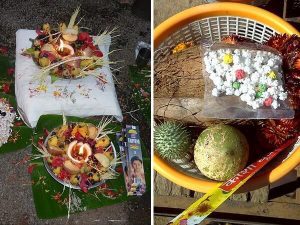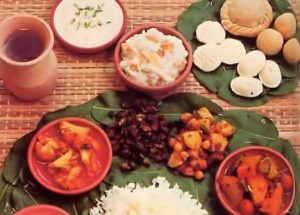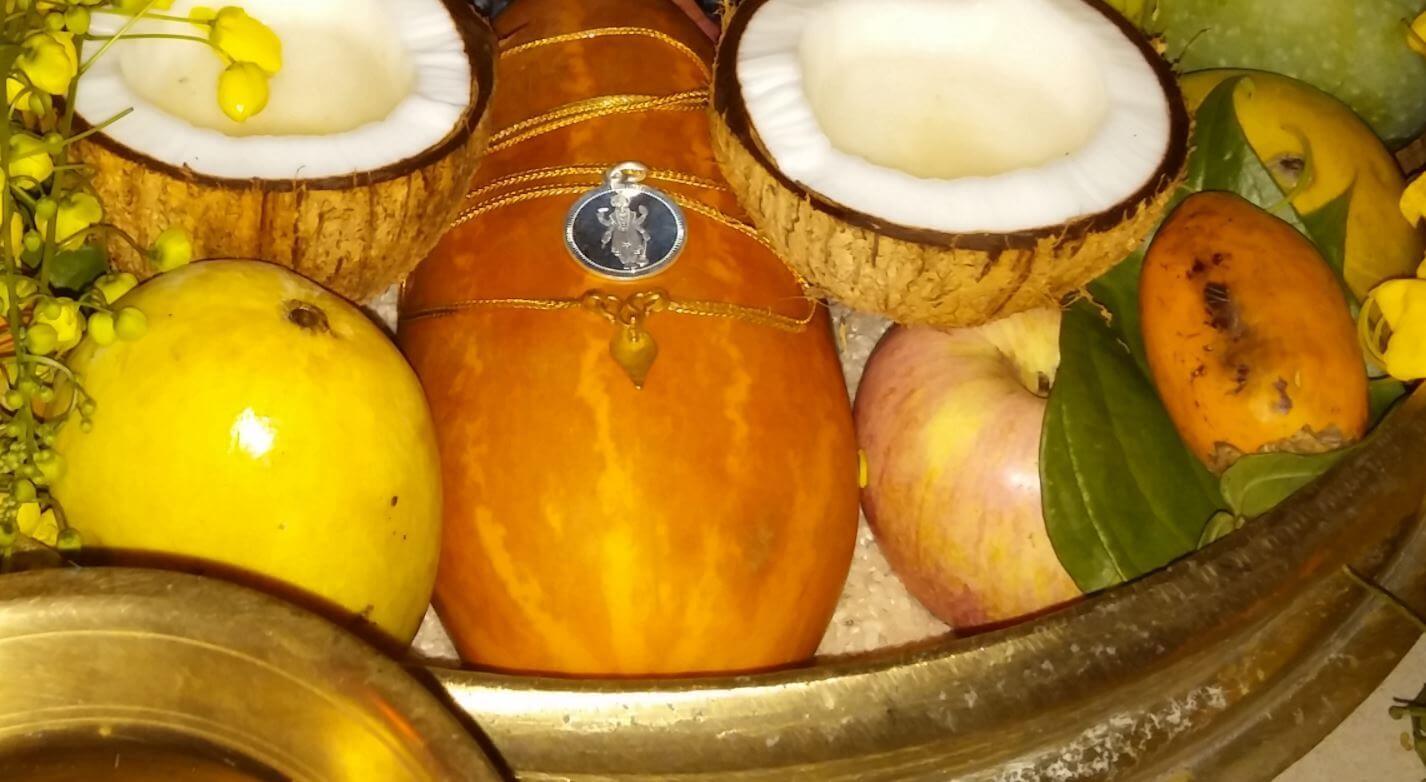Reading Time: 4 minutes
Ruchira tells us about different kinds of prasad (sanctified food), a few that might surprise you, that are offered to the devotees. An exclusive for Different Truths.
 I am not religious-minded or devout per se. Though born in a Hindu family, I do not subscribe to the paraphernalia of rites and rituals involved. On the contrary, I visit places of worship of diverse faiths and mingle with their followers at all times. Having said that, I am not averse to visiting Hindu shrines or attending religious events. However, I confess, I do have a soft corner for prasad or sanctified food, which is the hallmark of the Hindu religion.
I am not religious-minded or devout per se. Though born in a Hindu family, I do not subscribe to the paraphernalia of rites and rituals involved. On the contrary, I visit places of worship of diverse faiths and mingle with their followers at all times. Having said that, I am not averse to visiting Hindu shrines or attending religious events. However, I confess, I do have a soft corner for prasad or sanctified food, which is the hallmark of the Hindu religion.
Indeed prasad has a broad spectrum. In average households, it may be sliced fruits, laddoos, nakul danaa (sugar balls) or chaal kawla (a mishmash of rice grains soaked overnight, ripe bananas and sugar). At Bengali community festivals like Durga and Saraswati pujas, the prasad constitutes fruits and sweetmeats, followed by khichuri and payesh (rice pudding).
Indeed prasad has a broad spectrum. In average households, it may be sliced fruits, laddoos, nakul danaa (sugar balls) or chaal kawla (a mishmash of rice grains soaked overnight, ripe bananas and sugar). At Bengali community festivals like Durga and Saraswati pujas, the prasad constitutes fruits and sweetmeats, followed by khichuri and payesh (rice pudding).
By and large, in temples located countrywide sweets and fruits form the staple prasad. But how many of you would believe there are several weird kinds of prasad too? Take a look.
At Lord Shiva’s temple situated in the village of Mazhuvanchery, Thrissur, Kerala the prasad is, you’ve heard it right, textbooks, CDs, DVDs, writing material and informative brochures. The temple authorities believe that knowledge dissemination is most important. Not surprising considering that Kerala happens to be the most literate state in the country!
At Vaishno Devi shrine situated in the Jammu region (J&K state), prasad comprises puffed rice, sugar balls, dry coconut, dry apple, etc. Each of these items has a long shelf life. Therefore, apart from direct on-the-spot, physical buying, these are sold in eco-friendly packages and even dispatched to far-flung destinations via speed post.
At Vaishno Devi shrine situated in the Jammu region (J&K state), prasad  comprises puffed rice, sugar balls, dry coconut, dry apple, etc. Each of these items has a long shelf life. Therefore, apart from direct on-the-spot, physical buying, these are sold in eco-friendly packages and even dispatched to far-flung destinations via speed post.
comprises puffed rice, sugar balls, dry coconut, dry apple, etc. Each of these items has a long shelf life. Therefore, apart from direct on-the-spot, physical buying, these are sold in eco-friendly packages and even dispatched to far-flung destinations via speed post.
Have you heard of the Azhagar Kovil, aka Alagar shrine, situated 21 km away from Madurai, in Tamilnadu? Its presiding deity is Lord Vishnu. The prasad available here is, guess what? Crispy crunchy dosas! The devotees make offerings of grains and cereals at the shrine, which is utilised to churn out yummy dosas and subsequently distributed to visitors. So, in case you happen to be in the neighbourhood, why not make a beeline to the temple and grab a dosa?
Have you heard of the Azhagar Kovil, aka Alagar shrine, situated 21 km away from Madurai, in Tamilnadu? Its presiding deity is Lord Vishnu. The prasad available here is, guess what? Crispy crunchy dosas!
At the Srikrishna temple of Ambalapuzha near Kerala’s capital, Thiruvananthapuram, payasam is offered to the deity. As befits the godly status, the dish is rich, smooth in texture and delightful to taste. Incidentally, in order to maintain its standard and quality, the divine dish gets made by the same family of chefs, generation after generation.
Lord Murugan (Karthikeya)’s temple located in the Palani hills of Tamil Nadu offers Panchamritham as prasad to the devotees. Actually this is a viscous jelly-like mixture containing five fruits, sugar candy and jaggery. In order to cope with the surging number of visitors, of late the authorities have given a nod to its commercial production.
One of the 52 shaktipithas in the country the Kamkhya Devi temple is located in Guwahati, Assam. During the indigenous month of Ashaadh (June–July), a unique natural phenomenon occurs here. A mineral spring or geyser gets activated and spews red coloured water. The devout consider this to be the sacred menstrual blood of the deity, who died a virgin. During this time, devotees flock to the temple to seek a unique prasad.
One of the 52 shaktipithas in the country the Kamkhya Devi temple is located in Guwahati, Assam. During the indigenous month of Ashaadh (June-July), a unique  natural phenomenon occurs here. A mineral spring or geyser gets activated and spews red coloured water. The devout consider this to be the sacred menstrual blood of the deity, who died a virgin. During this time, devotees flock to the temple to seek a unique prasad. Tiny fragments of cloth dipped in the spring’s water (supposedly menstrual fluid of the deity). During these days, the devotees flock at the temple complex to receive a unique and very holy Prasad, which consists of a small piece of cloth supposedly moist with the menstrual fluid of the deity) is freely distributed; this is believed to usher in good luck.
natural phenomenon occurs here. A mineral spring or geyser gets activated and spews red coloured water. The devout consider this to be the sacred menstrual blood of the deity, who died a virgin. During this time, devotees flock to the temple to seek a unique prasad. Tiny fragments of cloth dipped in the spring’s water (supposedly menstrual fluid of the deity). During these days, the devotees flock at the temple complex to receive a unique and very holy Prasad, which consists of a small piece of cloth supposedly moist with the menstrual fluid of the deity) is freely distributed; this is believed to usher in good luck.
At the Khabees Baba temple in Sitapur district of Uttar Pradesh, there are neither idols nor priests. Devotees offer liquor to a pair of slipper-shaped structures placed on an elevated platform. In this manner, they venerate the benevolent saint who lived here nearly150 years ago. A portion of the liquor offered here is collected and distributed as prasad to the devotees.
At first, you might mistake the place for a Chinese eatery with chop suey, rice noodles and vegetable dishes piled all around. In reality, it is nothing of the sort. I’m talking about the famous Chinese Kali Temple located in Kolkata’s Tangra neighbourhood. The story goes, once upon a time a 10-year-old boy from the Chinese diaspora, who inhabit the locality, fell seriously ill. His parents laid him at the temple, which at that point of time, was a makeshift one located under a tree. They prayed hard for him, The boy finally recovered! Hence the deity (Maa Kali) assumed great significance and importance for the community. Many decades later the prasad doled out here is a harmonious blend of Bengali Hindu sweets and fruits accompanied by highly popular Chinese savouries! A glowing example of inter-faith, communal harmony.
Photo from the Internet














